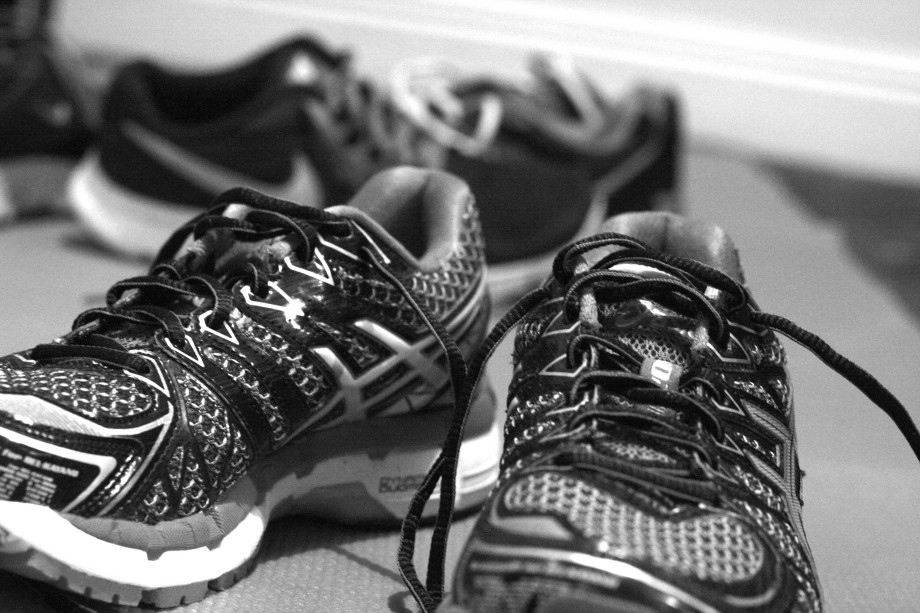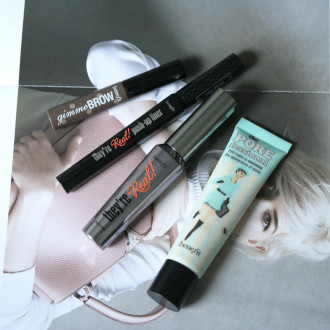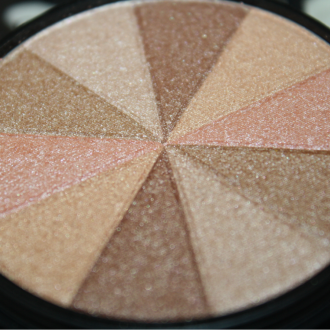Last week I gave some running tips, and one was to get proper running shoes - like, not Primark’s own or some kids Nike’s because they’re so cheap but also really cute.
This week, I’m telling you why. It’s quite an informative post, so may not be to everyone’s taste but I feel like if I read this on someone’s blog before I started running, I’d have saved myself a lot of hassle and pain.

One of my favourite things about being a shoe size 5 – 6 is that I can fit into kid’s Nikes shoes, even more so when they cost under £30 at Sports Direct. I have had good running shoes in the past, but the last two years I’ve not really looked for special support as my workouts didn’t involve running. When I started running in November, I knew my battered kids Nike’s probably weren’t up to the job but I carried on running anyway, until it got to the point that I was limping on longer runs. Oopsie.
I went to a store that analyses your gait, and was told I needed neutral shoes – I instinctively knew this was wrong as my ankles collapse in when I run, but I didn’t want to pipe up against the machine and staff so I bought some neutral shoes which I felt completely uncomfortable even walking in, and I used them for running. I managed to clock up about 15k on a few runs before really messing up my ankles and Achilles heels, which laid me off running for a week and made me kind of want to punch a) the girl who told me to get them and b) myself, for doing it when I knew it wasn’t right.
Anyway, I decided to do some research into the whole thing so that you all wouldn’t make the same mistake as me and probably hundreds of others out there. I know, I know, I’m too good to you all. I also went to Asics, got my feet reanalysed and as ‘diagnosed’ with feet that pronate, which was 100% consistent with the shin splints, ankle pain, and rolling in of my ankles that I have. I 100% recommend going to ASICS if you’re in Leeds and want to start running, the guys there actually run themselves, clearly are passionate about running, and are easy on the eyes if you know what I mean. They also do a free outdoor running club on Tuesdays (5km) and Thursdays (10km) which I think I might go to now and then!
When walking and running, there are three ways your foot can hit the floor – pronation, neutral, or supination.
Pronation (this is me!)
You pronate when your feet the floor and roll inwards when they should be pushing off on to your toes. This movement means at the time of push off, your ankles and Achilles heel twists inwards, which can cause damage if constantly repeated. You can imagine me running 20k a week would count as constantly repeated, so it’s no surprised that I hurt myself. Luckily I actually managed to get a small injury and sort my shoes out, as full on Achilles tendonitis can stop you running for months!
You’re more likely to pronate if you have flat feet, or knocked knees. I used to actually have a really high arch, but I have knocked knees and over time it must have collapsed my arch as I actually have flat feet nowadays. Who even knew stuff like that was possible?! It’s actually quite easy to tell if you pronate, as your ankles visible bend inwards and your shoes wear more on the inside. Wearing poorly fitted shoes can contribute to flat feet and pronation, eep!
If you pronate to the point it’s messing with your joints and tendons, you need shoes with arch support which basically stops the foot and ankle from collapsing in. Most running brands offer shoes with differing levels of support, for different levels of pronation. Sadly, these only stop the symptoms, so you need to physically build your arches up to prevent long term damage and reliancy on supportive shoes. Anything barefoot helps to build up these muscles – yoga, barefoot walking, barefoot running, walking in the sand… As well as calf stretches, ankle strengthening exercises, hip strengthening exercises if your whole gait has become misaligned, foot stretches and rolling a golf ball under your foot.
Neutral
If you’re a neutral runner, you’re feet and ankles work exactly as they should and you’ll just need neutral shoes (literally neutral, no special supports). If you’re shoe wear or footprint is evenly distributed you’re probably neutral, but it’s worth getting checked out anyway. Neutral feet can eventually become misaligned with poorly fitting shoes, so don’t think that you’re feet are great so you can abuse them!
Supination (also known as under-pronation)
When you supinate, you’re feet don’t roll inwards enough (less than 15%) - literally the opposite of pronation! Despite being polar opposite of pronation, it can have the same effect on your Achilles heel and damage your knees as it absorbs the shock. Normally, you supinate because you have high arches in the feet, so that’s a tell tale sign, and your ankles may lean outwards too. You’ll need shoes with a curved sole, and will need to do calf, hamstring and quad stretches to help fix it.
I appreciate this is a bit of a technical topic, so I’d love your feedback. What would you like Fitness Friday to be about? I’m hoping that the series can help people who are trying to increase their fitness or learn about fitness, but I want my everyday readers to enjoy it too so let me know in the comments the kind of topics you’d like to see!






I love your fitness tips – will look out for them on Fridays!
I definitely think good running shoes make a difference – I am off to find new ones too and this article helped suggest what to look out for when getting some and also the kind of salesperson I should really be getting served. I have a 10 K in 6 weeks’ time so need to try and avoid injuries!
Julia xo